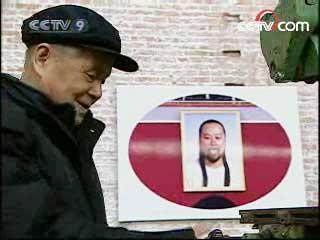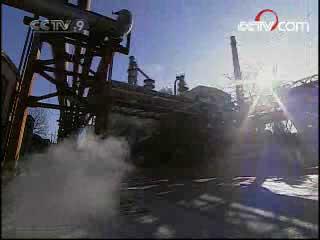------Program code: DO-080320-01627 (what's this?)
Source: CCTV.com
03-20-2008 09:37
Gu Wenrong said, "The products were all imported at first. But later, a factory with 10,000 workers was set up with assistance from 36 factories in East Germany."
 |
The big room full of art was the first section of Workshop One at Factory 798. Here, Gu Wenrong once worked as director.
In 1957, News Briefing published a report about East German leader Otto Grotewohl visiting the 718 factory. It read: "The North China Wireless Appliances Friendship Factory was designed and constructed with the help of the German Democratic Republic. Today, the staff are welcoming Premier Grotewohl, who is on a visit."
Li Rui said, "The German Democratic Republic, led by the Communist Party, belonged to the socialist camp at the time. So it was very open to China. Some 20 factories scattered across East Germany were involved in the project."
In 1953, China and East Germany signed an agreement on the joint construction of Factory 718. The following year, an East German construction institute was entrusted with the design. Luo Peilin, director of the factory planning team and later its chief engineer, was instrumental in the cooperation.
Luo Peilin said, "The materials we provided were capable of withstanding a magnitude-7 earthquake. But the construction institute insisted it should be 8, based on the records they had about Beijing. Otherwise, they couldn't guarantee the design."
 |
The institute cited historical factors to prove that Beijing had on at least one occasion suffered a magnitude 8 earthquake. Based on this, they required that No. 500 type bricks should be used. But these had never been produced in China, so the institute built two special brick factories, providing the technology for free. They insisted that every single brick should be subjected to strength testing; any that failed would be discarded.
Feng Huaihan said, "East Germany had experience from the Second World War. If there was a war here, the factory building had to be able to withstand a bomb."
In 1954, the East German Vice Premier, Fred Oelssner, ordered that a radio components support team should be set up, to deal with any problems encountered by the Chinese. Even though East Germany didn't have a factory of its own on the scale of the Chinese one, 44 experts were recruited for the team. They provided technology and production lines to help China complete the project.
In the meantime, several teams were sent from China to study in East Germany. Gu Wenrong was a member of one of them.
Gu Wenrong said, "I travelled from Poland to Berlin by train; the journey took me 7 days in all. We were assigned to different factories. Mine was the Hermsdorf Repair Workshop."
